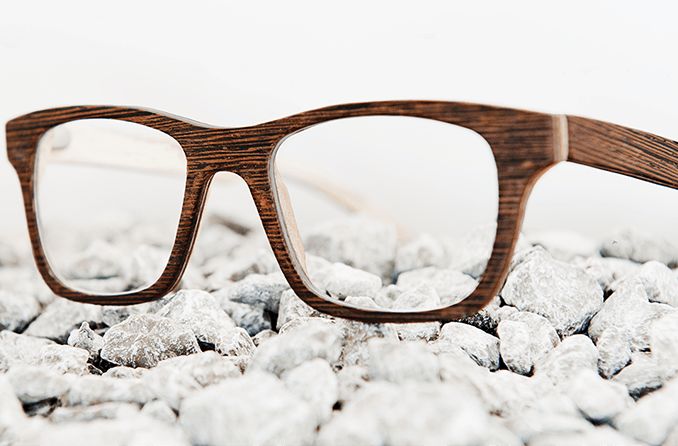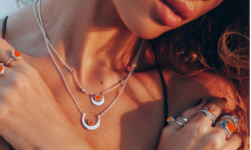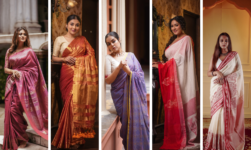
At present, the common frame materials on the market are mainly divided into two categories: plastic and metal.
1. Plastic frame
Divided into injection molding and plate two.
1. Injection molding material
The injection molding process is to melt plastic rice (currently mainly PC, plastic steel, TR) and inject it into the mold to cool and form.
The advantage is that the dimensional stability of the whole batch is high, the processing speed is fast, and the overall cost is low.
The disadvantage is that most of them are painted on the surface, which is not wear-resistant and easy to fade, and the paint layer is easy to peel off.
Mainly include the following categories:
A. PC material
It is the material that was once called “space sheet”, and if it exceeds 10mm, it is bulletproof glass.
Advantage: lower material price. Have some flexibility. Impact-resistant (that’s why it’s called a space sheet), cracks but won’t chip away.
Disadvantages: The surface painting is not environmentally friendly, and the paint layer is easy to peel off. Less comfortable and less durable. Frames cannot be adjusted for different face shapes.
B. TR material
material that is currently used in large quantities. Excellent flexibility, also known as “memory plastic”.
Advantages: high material transparency. Good flexibility, it can accommodate the needs of different sizes, and it is resistant to extrusion and trampling (it will break due to the addition of recycled materials). The texture is very light.
Disadvantages: Surface spraying is not environmentally friendly, and the paint layer with poor painting technology will peel off quickly (about 2 years for good). Because the elasticity is very good, the frame cannot be adjusted, and the softness of the frame also provides the greatest latitude to the poorly skilled lens maker, that is to say, the poorly made lenses are easy to fit into the frame.
C, plastic steel material
Also known as tungsten titanium, it has become more and more popular in recent years.
Advantages: strength and surface hardness are better than TR. The flexibility is slightly lower than TR and higher than PC. Lightweight. Due to its high strength, it can make a very thin circle shape and can make an ultra-thin frame that is closest to a metal frame. Of course, there are not many companies that master this technology. The surface paint layer has high adhesion.
Disadvantages: The surface has a matte texture and needs to be painted, and the requirements for painting technology are very high. After painting, the frame with insufficient technology will cause the frame to be easily broken.
D. carbon fiber
Mainly used for decorative accessories and temples.
Advantages: light texture, high strength, high-temperature resistance, unique texture on the surface.
Disadvantages: large bending and easy to break.
2. Plate material
It is pre-made into a plate-shaped (about 5-8mm) raw material and then cut into the required frame or temple shape according to actual needs.
A cellulose acetate material
The most board materials on the market, almost all board materials on the market are cellulose acetate.
Advantages: high surface hardness. No surface treatment, noble texture, wear-resistant. It can be adjusted for appropriate comfort according to different face sizes. It is a mature material that is widely used in eyewear products of international apparel brands.
Disadvantages: The material is hard, and the comfort is poor if the adjustment is not appropriate. Acidic materials cannot be used with PC lenses, which will cause the lenses to crack. heavier. It will return to flat (because it is cut from a flat plate) and needs to be adjusted, and the mirror feet need to be shaped by copper cores.
B. Haimani material
There are not many on the market, but it has been in the foreign market for more than 6 years.
Advantages: On the market, it is a perfect solution for wrapping the contents (flakes of real dried flowers, stainless steel sheets, denim, lace, etc.), and the texture presented is more three-dimensional and layered. The surface is not painted and electroplated, which is durable. The texture is lighter than cellulose acetate. The flexibility is also better than cellulose acetate. The frame can be adjusted moderately to better fit the size of the face.
Disadvantages: The surface hardness is lower than that of cellulose acetate. The surface texture is not as good as cellulose acetate.
Second, the metal frame
1. Alloy material
There is cupronickel (mainly copper, mainly adding nickel, zinc, etc.), manganese-nickel (mainly manganese, mainly adding nickel, etc.), high nickel (mainly nickel, adding chromium, manganese, etc.), nickel-copper (mainly nickel, adding nickel, etc.) Mainly, adding copper, etc.) and other alloy materials, there are slight differences in physical and chemical properties such as strength and corrosion resistance.
Advantages: low material price (especially white copper), low processing difficulty. Easy to adjust the frame.
Disadvantages: poor electroplating adhesion, easy to corrode and rust, some people are susceptible to metal allergies, easy to be squeezed and deformed, and heavier.
2. Stainless steel material
Basically, it is stamped and formed from thin stainless steel material.
Advantages: good flexibility, resistance to deformation, lightweight. The surface is treated with IP electroplating, which is durable.
Disadvantage: cannot be adjusted. Lenses with high degrees are thicker and affect appearance. Frames with painted surfaces are easy to peel off and are not durable.
3. Titanium material
When the titanium purity reaches more than 99%, the titanium metal material can be called pure titanium glasses. The frame made of pure titanium material has excellent characteristics such as high melting point, light material, strong corrosion resistance and firm electroplating layer, which can ensure the two important properties of the beautiful and durable glasses frame. The ideal metal frame material.
Advantages: high strength, not easy to deform, but the adjustable frame, not easy to metal allergy. High adhesion after IP plating, high durability, and lightweight.
Disadvantages: high material prices, difficult processing, resulting in higher prices.
4. Beta titanium material
It can be understood as another molecular state of titanium material. Although the purity of beta titanium cannot be compared with pure titanium, its strength, fatigue resistance, and environmental corrosion resistance are better than pure titanium. It is widely used in frames with high elastic requirements such as filament-shaped temples, nose autumn, and slender frames.
Advantages: good flexibility, not easy to deform, lightweight.
Disadvantages: Not suitable for people with high heights, the front end of the frame is too heavy and easy to slide down, and the lens is too thick to affect the appearance and cannot be adjusted. The material price is high, the processing is difficult, and the price is high.






